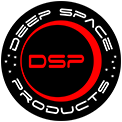What should I expect from my HyperTuned mount.
It is very important to understand what you can expect from the HyperTune of your mount. You should expect a mount that performs better than it did unless we tell you otherwise. The amount of improvement will depend in part on how the mount was before HyperTuning. A mount that is operating fairly well before HyperTuning will show a less dramatic improvement than one that was not performing well to start with. Goto, tracking and guiding will all usually show improvement. In addition, the mount may sound better (but no necessarily quieter) after Hypertuning. One of our main goals is to take a mount that is not performing as it should for guiding imaging and get it to the point that guided imaging is reasonably possible, a higher level of performance than is generally needed for visual observing.
What you should not expect is that your mount will somehow perform as well as mounts costing much more. In general, most of the mounts that we HyperTune are consumer level, mass-produced mounts. While these mounts can perform very well for visual use and respectably for astrophotography use, the fact is, they are not high precision pieces of equipment and are limited in their performance because of this.
What you should not expect is that your mount will somehow perform as well as mounts costing much more. In general, most of the mounts that we HyperTune are consumer level, mass-produced mounts. While these mounts can perform very well for visual use and respectably for astrophotography use, the fact is, they are not high precision pieces of equipment and are limited in their performance because of this.
What should I do when I get my HyperTuned mount back?
Answer: The first thing you should do is unpack the mount, set it up and test it out in the daylight. You should not take the unopened box out to a distant star party and open it up expecting it to work perfectly.It is important to understand that some fine adjustment of your mount may be necessary after HyperTuning. The adjustments that may be necessary are ones that everyone should know how to do in the first place since soon or later they will be necessary. A small percentage of the mounts we HyperTune require some fine adjustment of the worm gear spacing after the return of the HyperTuned mount. This is typically with the Atlas, CGEM and G11 mounts due to features of their construction. When we make the final adjustments on a mount we try to minimize the backlash present. However, after the mount goes through shipping and ends up in a different climate from that here in Phoenix, Arizona, the gears may end up too tight or too loose. This is due mostly to the differential expansion and contraction of the three or more different metals used in the construction of these mounts. The adjustments are not particularly difficult and we can provide written guidance on making them as well as all the e-mail, virtual, and telephone support you need.
How do I get the address for shipping the mount to you for HyperTuning?
The shipping address is included on the receipt from your website order. To estimate the cost for shipping to us, use Phoenix, AZ 85054. We generally recommend FedEx Home Delivery service for larger mounts and either that or USPS Priority Mail for smaller mounts like the LXD or CG-5 mounts.Make sure to fully insure your mount when shipping as we are not responsible for shipping damage.
How should I pack my mount or OTA for shipping?
The original packing materials are the best. However, if those are not available you can pack the equipment yourself and equipment that is kept in Pelican cases or similar cases can often be shipped directly in those containers.We recommend never use a pack-and-ship place for packing. They never do a good just and usually just toss your stuff in a box of peanuts unprotected.
The best packing is in a sturdy box. Double walled cardboard works best. The equipment should thickly wrapped in bubble wrap and then tightly packed with peanuts, paper or other packing material. The goal is to not have the equipment move around during transport.
An excellent alternative for packing is to use expanding foam packing materials like Instapak. This material forms a custom package for your equipment inside a cardboard box. In addition, Styrofoam, like that used in home siding and available from home improvement stores can be used to create your own custom shipping container inside a sturdy cardboard box.
If we receive equipment that is insufficiently packed for return shipment, there may be a charge for repacking. The charge is typically around $20.
Is shipping included with the HyperTune service?
No. Because we cannot predict how, from where, and in what type of packaging a mount is shipped, the customer is responsible for shipping the mount to us. When the HyperTune is complete, then the customer is given a quote for the return shipping which can then be paid through a special page on our website.


